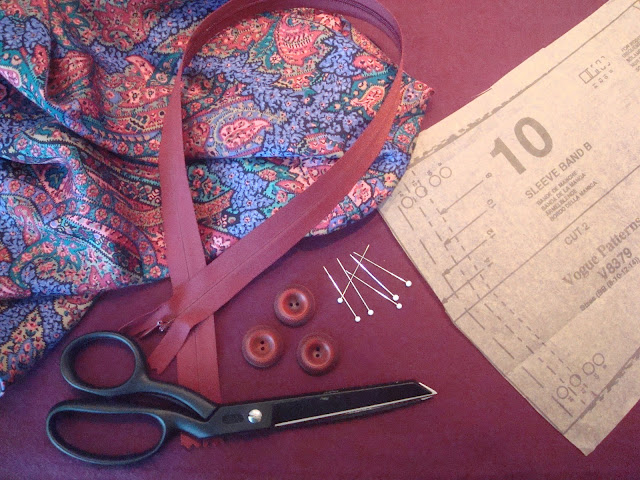 I think every leader has had the experience where an 8 year old beginner in the Clothing and Textile project comes to them with their project chosen and the pattern and fabric purchased. You find she has chosen a skirt with a zipper, waistband, pleats and a lining. And the fabric is a slippery polyester!
I think every leader has had the experience where an 8 year old beginner in the Clothing and Textile project comes to them with their project chosen and the pattern and fabric purchased. You find she has chosen a skirt with a zipper, waistband, pleats and a lining. And the fabric is a slippery polyester!To avoid this situation, I have found it is very helpful to go to the fabric store with my students when they are choosing the pattern, fabric and notions. In our club there are 27 4-Hers enrolled in the Clothing and Textile Projects and it can be a challenge to meet with all of them! I choose two or three dates that I will be at the fabric store and they meet me there on the date that suits their schedule. I am there to help them choose their pattern and fabric and to answer any questions. I can also act as an advisor when there is disagreement between the child and the adult about the appropriateness of a particular pattern or fabric.
This year, I made a form to help them with the shopping process. It makes it easier for each 4-Her to check that they have all the notions and supplies that they need for their project. The form can be printed out and given to each 4-Her before they come to the store. Students complete the section about their measurements before they shop. I prefer that a parent/guardian take the measurements at home. I remember being very embarrassed by this as a young seamstress—I would have been humiliated to have my measurements taken in front of my friends!
Here is the form (Just click on it to print for yourself):
Here is the form (Just click on it to print for yourself):
The rest of the form is filled out at the store and when it is completed they should have everything they need for the project. There is a place to fill out information about the fabric; the fabric fiber and care is something that we often forget to record and it will be needed if they are going to participate in Fashion Revue! I remind the 4-Hers that this form can be used as a reference when completing these forms—I know that sometimes they are lucky if they can find the pattern envelope by then!
I encourage my 4-Hers to look at patterns online and to let me know what they have in mind for a project. Ideally, a student begins sewing at age 8 and will spend about 3 years as a beginner, 3 years on intermediate projects and 4 years as an advanced seamstress. If the student follows this progression, these are the projects I encourage them to make:
- Beginner—pillowcase, apron, elastic waist garment
- Intermediate—shift or sundress, elastic waist garment and top, simple garment (one or two pieces) with a zipper
- Advanced—Projects with increasing difficulty where students will learn a new technique each year.
I remind them repeatedly that they need to think simple—the project will take more time to complete than they realize! A simple project done well is better than a complicated project done poorly!
Make sure that students have chosen a pattern that is appropriate to their skills. For example, when I suggest an apron as a project, I mean a simple apron and not a difficult apron! If the student or the parent does not have sewing experience they may not be able to gauge the difficulty of the pattern by looking at the photograph or drawing.
Happy Sewing,
maureen




















